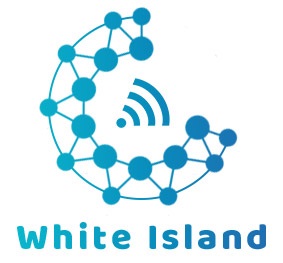MIMOSA (Modular Interface for Maintenance Operations, Systems, and Assets) plays a crucial role in optimizing data management across industries, especially in environments where managing complex systems and assets is essential. But what exactly is Product MIMOSA, and why does it matter in data management? In this article, we’ll dive deep into its role, how it integrates with existing systems, and the impact it has on data efficiency, accessibility, and decision-making.
-
What is the Role of MIMOSA in Data Collection and Integration?
What is MIMOSA and why does it matter in data management? One of its primary functions is to standardize the collection and integration of data from various sources. Data is generated at different stages of asset lifecycles, but unless this data can be integrated seamlessly, it’s essentially useless. MIMOSA helps unify disparate data sources, ensuring that organizations have access to accurate, up-to-date information in a standardized format. This improves operational efficiency, reduces errors, and enhances decision-making capabilities.
For instance, MIMOSA’s data integration standards enable it to work across diverse industries such as manufacturing, energy, and transportation, where systems and data sources may be highly specialized. The result is a cohesive data set that enhances system interoperability, enabling organizations to make more informed decisions and optimize operations.
-
How Does MIMOSA Enhance Data Accessibility and Collaboration?
What is MIMOSA and why does it matter in data management? Data is only useful if the right people can access it when they need it. MIMOSA plays a significant role in optimizing data accessibility by providing a standardized framework for sharing and retrieving information. With its modular approach, MIMOSA ensures that data can be accessed across departments and teams, promoting better collaboration.
For example, in an industrial setting, maintenance teams, engineers, and operators all need access to real-time data to ensure that equipment is functioning efficiently. MIMOSA allows these teams to access consistent and reliable data, improving collaboration between departments and streamlining workflows. As a result, companies can reduce downtime, avoid operational bottlenecks, and improve overall productivity.
-
MIMOSA and Data Quality: Ensuring Accuracy and Consistency
One of the biggest challenges in data management is maintaining data quality—ensuring that the information collected is accurate, consistent, and reliable. What is MIMOSA and why does it matter in data management? MIMOSA provides frameworks and standards that enforce best practices for data accuracy and consistency across various systems.
Through its standardized interfaces, MIMOSA ensures that data is collected in a uniform format, eliminating discrepancies that can occur when different systems communicate with one another. This reduces the likelihood of data errors and inconsistencies, which can lead to costly operational mistakes. Moreover, the transparency in data processes offered by MIMOSA allows businesses to maintain high-quality data at all times.
-
MIMOSA’s Role in Predictive Analytics and Decision-Making
Predictive analytics has become a game-changer in many industries, allowing businesses to anticipate future trends, identify potential issues, and make data-driven decisions. What is MIMOSA and why does it matter in data management? MIMOSA optimizes data management in this area by ensuring that relevant, real-time data is available for analytics tools to process.
By enabling the integration of various data sources, MIMOSA helps create a holistic view of an organization’s operations, facilitating predictive analysis and better decision-making. For instance, maintenance teams can use predictive models to identify when machinery is likely to fail, based on historical performance data, helping to minimize downtime and maximize efficiency.
-
MIMOSA’s Impact on Data Security and Compliance
As data becomes more integrated and accessible, concerns about security and compliance become more prominent. What is MIMOSA and why does it matter in data management? MIMOSA plays a critical role in optimizing data management by ensuring that data is protected through standardized security protocols. It also helps organizations stay compliant with industry regulations.
MIMOSA’s architecture supports secure data exchanges between systems, while ensuring that only authorized users can access sensitive information. Furthermore, its standardized approach helps organizations maintain compliance with relevant regulations, such as ISO standards, GDPR, or industry-specific compliance rules.
Q&A: Frequently Asked Questions
Q1: How does MIMOSA help optimize asset management through data?
MIMOSA’s role in asset management comes from its ability to integrate data from various sources, making it easier for teams to track asset conditions, performance metrics, and maintenance needs. By providing a standardized way to manage this data, MIMOSA enables better decision-making, more effective asset utilization, and a longer lifespan for equipment.
Q2: Can MIMOSA improve real-time data monitoring?
Yes! MIMOSA enhances real-time data monitoring by ensuring that systems are interoperable and that relevant data is immediately accessible. This allows operators to make quicker decisions based on live data, ensuring timely interventions and reducing downtime.
Q3: How does MIMOSA compare with other data management standards?
While many other data management standards exist, MIMOSA stands out with its focus on the asset lifecycle and its integration across diverse systems and industries. It’s particularly beneficial for industries where managing complex systems and assets is essential. Compared to other standards, MIMOSA’s flexibility and modularity make it a more scalable solution for optimizing data management.
Q4: What are the main challenges organizations face when implementing MIMOSA?
Implementing MIMOSA can require a significant upfront investment in terms of time and resources, especially in organizations with existing legacy systems. Additionally, the integration of different data sources can be challenging without proper standardization. However, the long-term benefits of MIMOSA—such as improved data accuracy, efficiency, and decision-making—often outweigh these initial challenges.
Q5: How can MIMOSA assist in predictive maintenance?
MIMOSA supports predictive maintenance by providing accurate, real-time data from various asset systems. This data can be used to predict when equipment will need maintenance, reducing unexpected downtime and improving maintenance scheduling. Predictive analytics powered by MIMOSA helps businesses save on repair costs and optimize their maintenance processes.

Conclusion: The Future of Data Management with MIMOSA
What is MIMOSA and why does it matter in data management? MIMOSA has proven to be a game-changer for organizations aiming to optimize their data management strategies. Its role in data collection, integration, accessibility, quality, and security has made it an invaluable tool in industries that rely on complex systems and assets. By adopting MIMOSA, companies can ensure that their data is optimized, accurate, and ready to support critical decision-making processes, all while maintaining high standards of security and compliance.
Visit us at wizland.
Introduction: What is MIMOSA and Why Does It Matter in Data Management?
MIMOSA (Modular Interface for Maintenance Operations, Systems, and Assets) plays a crucial role in optimizing data management across industries, especially in environments where managing complex systems and assets is essential. But what exactly is MIMOSA, and why does it matter in data management? In this article, we’ll dive deep into its role, how it integrates with existing systems, and the impact it has on data efficiency, accessibility, and decision-making.
-
What is the Role of MIMOSA in Data Collection and Integration?
What is MIMOSA and why does it matter in data management? One of its primary functions is to standardize the collection and integration of data from various sources. Data is generated at different stages of asset lifecycles, but unless this data can be integrated seamlessly, it’s essentially useless. MIMOSA helps unify disparate data sources, ensuring that organizations have access to accurate, up-to-date information in a standardized format. This improves operational efficiency, reduces errors, and enhances decision-making capabilities.
For instance, MIMOSA’s data integration standards enable it to work across diverse industries such as manufacturing, energy, and transportation, where systems and data sources may be highly specialized. The result is a cohesive data set that enhances system interoperability, enabling organizations to make more informed decisions and optimize operations.
-
How Does MIMOSA Enhance Data Accessibility and Collaboration?
What is MIMOSA and why does it matter in data management? Data is only useful if the right people can access it when they need it. MIMOSA plays a significant role in optimizing data accessibility by providing a standardized framework for sharing and retrieving information. With its modular approach, MIMOSA ensures that data can be accessed across departments and teams, promoting better collaboration.
For example, in an industrial setting, maintenance teams, engineers, and operators all need access to real-time data to ensure that equipment is functioning efficiently. MIMOSA allows these teams to access consistent and reliable data, improving collaboration between departments and streamlining workflows. As a result, companies can reduce downtime, avoid operational bottlenecks, and improve overall productivity.
-
MIMOSA and Data Quality: Ensuring Accuracy and Consistency
One of the biggest challenges in data management is maintaining data quality—ensuring that the information collected is accurate, consistent, and reliable. What is MIMOSA and why does it matter in data management? MIMOSA provides frameworks and standards that enforce best practices for data accuracy and consistency across various systems.
Through its standardized interfaces, MIMOSA ensures that data is collected in a uniform format, eliminating discrepancies that can occur when different systems communicate with one another. This reduces the likelihood of data errors and inconsistencies, which can lead to costly operational mistakes. Moreover, the transparency in data processes offered by MIMOSA allows businesses to maintain high-quality data at all times.
-
MIMOSA’s Role in Predictive Analytics and Decision-Making
Predictive analytics has become a game-changer in many industries, allowing businesses to anticipate future trends, identify potential issues, and make data-driven decisions. What is MIMOSA and why does it matter in data management? MIMOSA optimizes data management in this area by ensuring that relevant, real-time data is available for analytics tools to process.
By enabling the integration of various data sources, MIMOSA helps create a holistic view of an organization’s operations, facilitating predictive analysis and better decision-making. For instance, maintenance teams can use predictive models to identify when machinery is likely to fail, based on historical performance data, helping to minimize downtime and maximize efficiency.
-
MIMOSA’s Impact on Data Security and Compliance
As data becomes more integrated and accessible, concerns about security and compliance become more prominent. What is MIMOSA and why does it matter in data management? MIMOSA plays a critical role in optimizing data management by ensuring that data is protected through standardized security protocols. It also helps organizations stay compliant with industry regulations.
MIMOSA’s architecture supports secure data exchanges between systems, while ensuring that only authorized users can access sensitive information. Furthermore, its standardized approach helps organizations maintain compliance with relevant regulations, such as ISO standards, GDPR, or industry-specific compliance rules.
Q&A: Frequently Asked Questions
Q1: How does MIMOSA help optimize asset management through data?
MIMOSA’s role in asset management comes from its ability to integrate data from various sources, making it easier for teams to track asset conditions, performance metrics, and maintenance needs. By providing a standardized way to manage this data, MIMOSA enables better decision-making, more effective asset utilization, and a longer lifespan for equipment.
Q2: Can MIMOSA improve real-time data monitoring?
Yes! MIMOSA enhances real-time data monitoring by ensuring that systems are interoperable and that relevant data is immediately accessible. This allows operators to make quicker decisions based on live data, ensuring timely interventions and reducing downtime.
Q3: How does MIMOSA compare with other data management standards?
While many other data management standards exist, MIMOSA stands out with its focus on the asset lifecycle and its integration across diverse systems and industries. It’s particularly beneficial for industries where managing complex systems and assets is essential. Compared to other standards, MIMOSA’s flexibility and modularity make it a more scalable solution for optimizing data management.
Q4: What are the main challenges organizations face when implementing MIMOSA?
Implementing MIMOSA can require a significant upfront investment in terms of time and resources, especially in organizations with existing legacy systems. Additionally, the integration of different data sources can be challenging without proper standardization. However, the long-term benefits of MIMOSA—such as improved data accuracy, efficiency, and decision-making—often outweigh these initial challenges.
Q5: How can MIMOSA assist in predictive maintenance?
MIMOSA supports predictive maintenance by providing accurate, real-time data from various asset systems. This data can be used to predict when equipment will need maintenance, reducing unexpected downtime and improving maintenance scheduling. Predictive analytics powered by MIMOSA helps businesses save on repair costs and optimize their maintenance processes.
Conclusion: The Future of Data Management with MIMOSA
What is MIMOSA and why does it matter in data management? MIMOSA has proven to be a game-changer for organizations aiming to optimize their data management strategies. Its role in data collection, integration, accessibility, quality, and security has made it an invaluable tool in industries that rely on complex systems and assets. By adopting MIMOSA, companies can ensure that their data is optimized, accurate, and ready to support critical decision-making processes, all while maintaining high standards of security and compliance.
Visit us at wizland.



